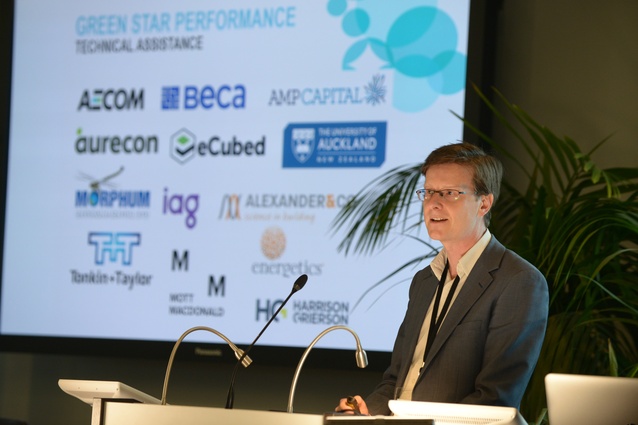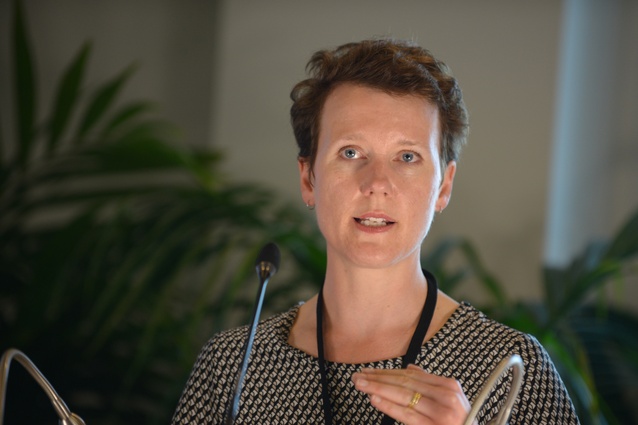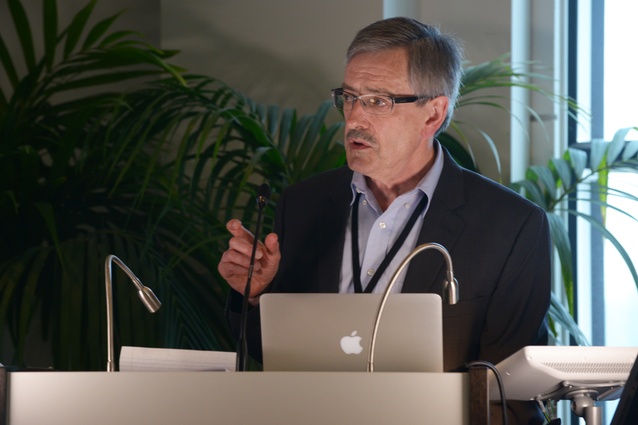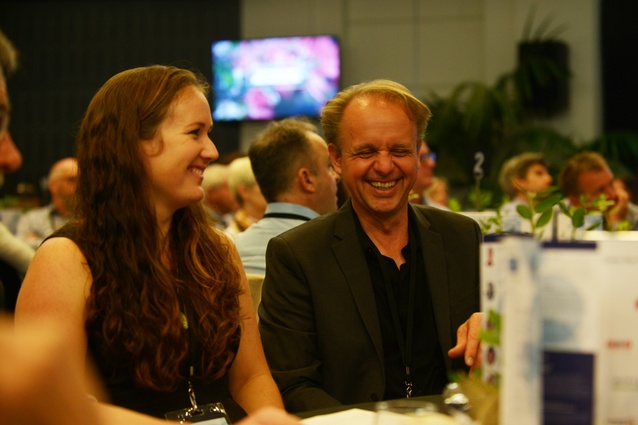Buildings for the better: Green Star Performance launch
The New Zealand Green Building Council released an innovative new Green Star rating tool for the existing building market – Green Star Performance – at a packed-out event at Beca Auditorium, Auckland on 29 November.
While the Green Star rating system has been primarily concentrated on new buildings, Green Star Performance allows a comprehensive, independent environmental and efficiency verification of New Zealand’s approximately 41,000 existing commercial buildings.
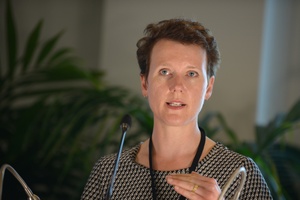
The rating tool comprises nine categories: management, indoor environment quality, energy, land use and ecology, emissions, transport, water, materials and innovation. Buildings will be rated from zero to six stars. A five Green Star Performance rating indicates New Zealand excellence, and six stars represents world leadership standard.
The launch event was kicked off by Sharon Zollner, senior economist at ANZ, who gave an impressively succinct and fascinating presentation on the state of New Zealand’s economy. She talked of business confidence, jobs, tourism, broken inflation models and the fact that we cannot ignore house price levels forever: this is a key vulnerability for our economy. We are just behind China on house affordability levels and household debt is at a record high. “Housing slowdown might hurt growth, but is probably not bad thing in the bigger picture,” Zollner said.
Over from Australia for the event, Eliza Matthews, associate director, Sustainable Finance Solutions at ANZ, spoke next, explaining the details and rationale behind green bonds and climate bonds. In a nutshell, the proceeds from green bonds are notionally earmarked to finance or refinance “green” projects, assets or business activities. Some benefits include access to a new pool of investors who are seeking to increase exposure to green assets.
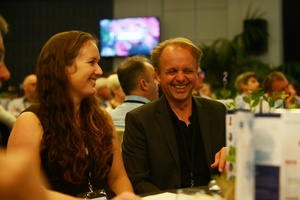
The concepts of ‘sustainability’, ‘climate change’ and the ‘Paris agreement’ are part of the general lexicon today, and quite rightly. Ross Liston, associate director, Advisory, Risk, Health & Safety and Sustainability at KPMG New Zealand, gave a wide-ranging talk that emphasised the fact that we need to do more than just adapt to address and tackle climate change, we actually need a large ecosystem shift. “As cities are massive users of energy consumption and also produce lots of greenhouse gases, net-zero carbon buildings are essential in helping countries achieve their nationally determined contributions,” Liston said.
To better explain the concepts behind Green Star Performance was Sam Archer of the NZGBC and Nicole Sullivan of the Green Building Council Australia (GBCA). Archer explained some of the more technical details of the new rating tool, and Nicole enthusiastically encouraged some cross-Tasman rivalry by giving us several case studies and stats about how Green Star Performance is doing in Australia, and announcing a tighter NZGBC–GBCA partnership.
The last two speakers were David Staker of Temperzone, who explained how their products are evolving to offer users complete control of their environment, and Brendon Dwyer, general manager – Building Services, Beca, who led us through trends in sustainable building design and operation. Dwyer stated that value was much more a focus now post-GFC and shared great examples of new sustainable buildings such as the coworking space GridAKL, where the use of the building is far more optimised through the intelligent sharing of facilities.

The event closed with a panel discussion facilitated by journalist Rod Oram on ‘sustainable revolution: how to make it happen’. Panel members comprised Connal Townsend, chief executive, Property Council New Zealand; Dr Lee Bint, sustainable building scientist BRANZ; Gillian Wess, chief executive, FMANZ; John Mauro, chief sustainability officer, Auckland Council and Andrew Eagles, CEO, New Zealand Green Building Council.
This was a fascinating discussion around many facets of sustainable building and the challenges we currently face, but when asked the personal definition of sustainability, memorable quotes included John Mauro’s “it is simply better for all, forever. It has to be fun, beautiful and joyful along the way,” and Dr Lee Bint’s comment that sustainability was about “taking a step forward as opposed to taking a step back. Leave nobody behind.” But it was Oram that perhaps made the most poignant comment, saying, “should I come back to earth, would I want to come back?” Some interesting food for thought.
There was a tangible buzz and a feeling of hopeful change in the air at the Green Star Performance launch event, which indicates a deep interest in this tool by many different parties. If we are serious about improving the quality of our existing building stock, reducing carbon emissions and ensuring our buildings are healthier to work and study in, Green Star Performance is an important step in the right direction.

